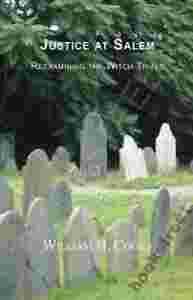|
For too long the accepted view of the Salem witch
trials has been that the events were caused either by
fraud and/or hysteria and that no witchcraft was
practiced by the accused. The religious leaders of the
day stirred up zealotry and the justice system was
either too corrupt or blind to properly administer
justice. As a result, all of the convictions were a
grave miscarriage of justice. However, there was actual
witchcraft practiced in colonial New England and it is
likely, although impossible to say with certainty, that
its effects were more than merely psychological. And
while miscarriages of justice were carried out,
especially when the judges abandoned traditional legal
protections in order to satisfy the wishes of the
masses, guilty people were still among the condemned. As
for the religious leaders, for the most part they
generally advocated caution in the prosecution of
suspected witches. Much of what people know, or think
that they know, about the events at Salem in 1692 is
wrong. Self-styled experts often make mistakes about
many of the basic facts and draw conclusions that are
not justified. The witch trials may hold a special place
in the imaginations of many people, however, often
imagination warps judgment, understanding, and memory.
Justice at Salem attempts to set the historical record
straight and using the evidence available draws new
conclusions about what happened that fateful year in
Massachusetts.
|
|

